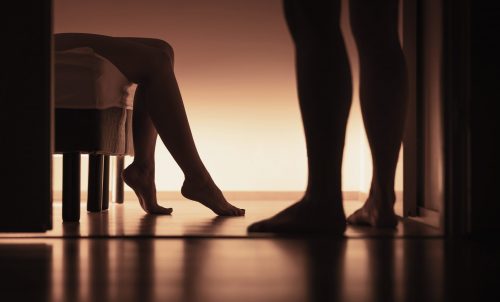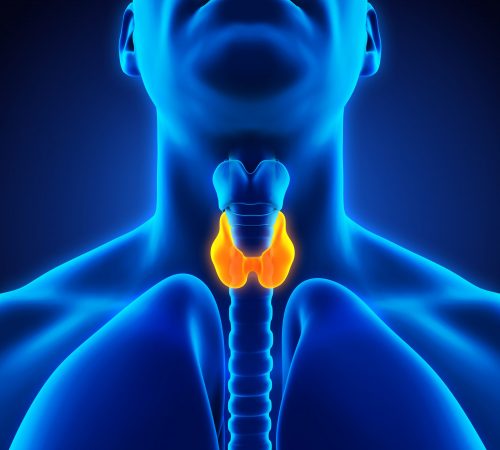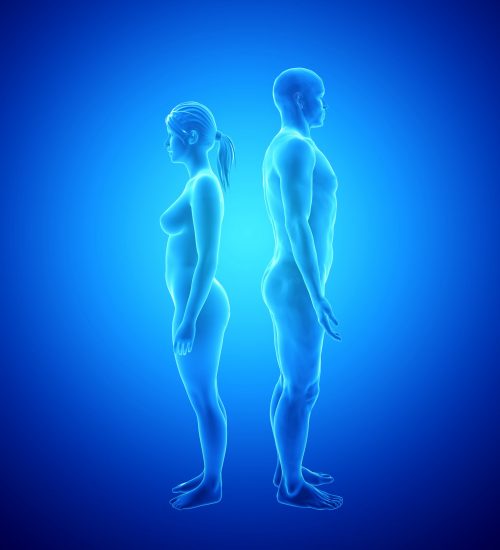Libido & Testosterone Replacement Therapy

A topic that is often discussed in Testosterone Replacement Therapy (TRT) is Libido. This is because there is a correlation between low testosterone and lowered desire for sexual thoughts/fantasies and sex acts including intercourse, collectively referred to as Libido [1].
Why is this seen? It’s well-known both anecdotally from clinical experience and seen in the literature that libido tends to decrease with age in both men and women [2][3]. There is a period in the chronology of all healthy males where sexual desire peaks. This is during puberty.
Why does this happen during this developmental period? When males reach puberty there is a sudden and massive cascade of testosterone/DHT and oestradiol. All of this is to stimulate growth and primary and secondary sexual characteristic development such as testicular descent, penile growth, and vocal changes as well as secondary hair growth, increased musculature growth also increased libido [4].
It is this sudden, large surge in the hormones or to give it another label, fluctuation that causes these amplified outcomes. This tells us that there is certainly a relationship between testosterone and sexual desire. The inverse of this is seen in aging men, where a reduction in libido is noted as we get older [5].
However, is it all to do solely with testosterone levels? The short answer is no. Whilst we see a link to testosterone levels declining as we get older and see a decrease in libido alongside this, libido is a complex process that is multifactorial.
There is a difference between what is called physiological arousal and the feelings of desire, also known as libido for sexual thoughts/fantasies and acts. There are six domains of physiological arousal with most of them concentrating on the psychological aspects [6]. The one we will focus on is the process of physical sexual arousal of the genitals on a cellular level via our hormone pathways. In men, having an appropriate amount of free testosterone for their age will allow for an extremely complex set of actions to occur to cause an erection. This set of actions is so unbelievably complex and incorporates both the sympathetic and parasympathetic nervous systems as well as somatosensory, supraspinal and central neural pathways [7]. As such it is an entire area of study in and of itself, so it would be impossible to go into to the intricacies of it in this article.
Earlier we mentioned that this complex set of processes is called physical sexual arousal. As has already been implied, it is not that simple. There have been studies [8] looking at real time MRI scanning of the male brain whilst being shown sexually stimulating images and videos. The results interestingly, showed activation and deactivation of the same regions of the brain but to wildly differing levels. It also demonstrated that the same three areas underwent activation, but the emotion centred areas (aka the paralimbic areas) showed differing levels of activity across study participants.
This is interesting as it shows that whilst the process of physical sexual arousal in men can be similar from a hormone and neurotransmitter perspective, our brains interpretation of how that makes us feel based on our interpretation of a visual stimulus, in the case of this study, impacted the level of desire. This is just one form of sexual stimulation being tested: visual stimulus. There are many others, audio, physical touch, speech, i.e., self-talk, be that out loud or internal, or being spoken to by a partner in a manner that evokes feelings of desire.
What Does This Mean For People On TRT?
Essentially, it means libido is complicated and not solely down to your male androgen and oestrogen ratio. It is important that this is optimal as the relationship between low testosterone and low libido is clear [9]. However, if all the other factors with regard to your current psychological state (stress, anxiety, sleep etc) are not optimal it will very likely impact on how you feel about engaging in, or even thinking about sexual acts/thought/fantasies.
Additional to this, relationship maturity has a part to play. It is well documented that those relationships that are long lived can, and do, tend observe a decline in frequency of physical intimacy [10] .In fact, there is a well-documented psychological phenomenon called “the Coolidge effect” [11]. This is well studied in animal models and shows a rapid renewal in sexual appetite when males have just copulated with a known female and then are presented with a de novo (new) female that is exhibiting signs of wanting to engage in sexual activity with the male. These females are mated with almost immediately. However, if the male is then shown the previous female, they appear unable to become aroused. Subsequently if you show them another new female then arousal occurs again. This demonstrates what is known as “habituation” and is a factor that leads to that decline in frequency of physical intimacy in long term relationships. This is also multifactorial. It is massively influenced by factors we do not even think of but just live with such as societal norms, religion, gender-based expectations and stereotypes, for example it can be expected that men should have a larger sexual desire than women and are immune to other factors inhibiting their libido and therefore are assumed to be the expected instigators of sexual activity in a relationship. That is one example of a common what is called “gender-based script” that we are brought up thinking is the norm [12].
These kinds of scripts, of which there are many place an inordinate amount of pressure on men and is in part what can lead to unconscious anxiety around performance which negatively impacts our libido and in many cases the ability to get and maintain an erection. When added to this that libido is not a constant, it is rhythmical, i.e. it is meant to have peaks and troughs, you can see how having the expectation that being on TRT will lead to a constant unwaveringly high libido may well lead to people being disappointed and thinking their TRT is not working properly if they do not see this effect.
What Does TRT Do For Libido?
Put simply, TRT will do the same thing for libido as it does for all other aspects of our lives, it won’t cure or fix everything. All it will do is normalise your male androgen profile and restore balance of your overall steroid hormone profile to allow you to do the things necessary to restore the order in other areas of your life. Are we saying that it won’t help raise a low libido for a man with low testosterone levels? Of course not! It will certainly help, but what we must be clear on is that having a constant stable level of serum testosterone when following a regime of daily microdosing of testosterone cypionate and HCG does not translate to a constant stable level of libido at all times. It is far too complicated a topic for things to be that simple. In fact, there is evidence that shows that a change in a steady state is what spikes changes in physiological response. Indeed, this is the science (albeit put very simply) behind how higher as required, or PRN dosing of erectile dysfunction drugs works [13].
To summarise; TRT can help a flagging libido [14] as it will raise both your total and free testosterone levels whilst ensuring an appropriate balance of your oestradiol levels. What it will not do is make you constantly think about, be ready for or wanting to engage in sex acts/thoughts or fantasies, which is completely normal. Personally, I do not think libido is the most sensitive marker for TRT efficacy; however, it is very specific. Have a read around sensitivity and specificity in research for more understanding of how important understanding the difference in those terms is.
As has been discussed above, libido is rhythmical, it is normal for it to wax/wane relative to multiple extraneous variables secondary to our male androgen profiles. However, daily microdosing of Testosterone Cypionate and HCG allows for the closest mimicking of our natural physiology [15] which allows us the baseline to ensure the best chance of normalising the rest of our physiological and psychological markers.
References
[1] Rastrelli, G., Corona, G. and Maggi, M., 2018. Testosterone and sexual function in men. Maturitas, 112, pp.46-52.
[2] Hayes, R. and Dennerstein, L., 2005. The Impact of Aging on Sexual Function and Sexual Dysfunction in Women: A Review of Population‐Based Studies. The Journal of Sexual Medicine, 2(3), pp.317-330.
[3] Chung, E., 2019. Sexuality in Ageing Male: Review of Pathophysiology and Treatment Strategies for Various Male Sexual Dysfunctions. Medical Sciences, 7(10), p.98.
[4] Breehl, L. and Caban, O., 2022. Physiology, Puberty. [online] Ncbi.nlm.nih.gov. Available at: <https://www.ncbi.nlm.nih.gov/books/NBK534827/> [Accessed 3 April 2022].
[5] Shigehara, K., Kato, Y., Iijima, M., Kawaguchi, S., Nohara, T., Izumi, K., Kadono, Y., Namiki, M. and Mizokami, A., 2021. Risk Factors Affecting Decreased Libido Among Middle-Aged to Elderly Men; Nocturnal Voiding is an Independent Risk Factor of Decreased Libido. Sexual Medicine, 9(5), p.100426.
[6] Hazlett-Stevens, H. and Fruzzetti, A., 2021. Regulation of physiological arousal and emotion. Handbook of cognitive behavioral therapy: Overview and approaches (Vol. 1)., pp.349-383.
[7] Panchatsharam, P., Durland, J. and Zito, P., 2022. Physiology, Erection. [online] Ncbi.nlm.nih.gov. Available at: <https://www.ncbi.nlm.nih.gov/books/NBK513278/> [Accessed 3 April 2022].
[8] Mouras, H., Stoléru, S., Bittoun, J., Glutron, D., Pélégrini-Issac, M., Paradis, A. and Burnod, Y., 2003. Brain processing of visual sexual stimuli in healthy men: a functional magnetic resonance imaging study. NeuroImage, 20(2), pp.855-869.
[9] Rajfer, J., 2022. Relationship Between Testosterone and Erectile Dysfunction. [online] PubMed Central (PMC). Available at: <https://www.ncbi.nlm.nih.gov/pmc/articles/PMC1476110/> [Accessed 3 April 2022].
[10] van Lankveld, J., Jacobs, N., Thewissen, V., Dewitte, M. and Verboon, P., 2018. The associations of intimacy and sexuality in daily life. Journal of Social and Personal Relationships, 35(4), pp.557-576.
[11] Ventura-Aquino, E., Fernández-Guasti, A. and Paredes, R., 2018. Hormones and the Coolidge effect. Molecular and Cellular Endocrinology, 467, pp.42-48.
[12] Gurney, K., 2022. Mind The Gap. [S.l.]: Headline Book Publishing LTD.
[13] Dhaliwal, A. and Gupta, M., 2022. PDE5 Inhibitors. [online] Ncbi.nlm.nih.gov. Available at: <https://www.ncbi.nlm.nih.gov/books/NBK549843/> [Accessed 3 April 2022].
[14] Hackett, G., 2011. Testosterone replacement improves Sexual Function, Aging Male Symptom and Depression Scores in a primary care population of men with type 2 diabetes. Journal of Men’s Health, 8(3), pp.238-238.
[15] Stevens, R. and Hearnshaw, J., 2020. Microdosing TRT – The Future of Testosterone Replacement Therapy – The Men’s Health Clinic. [online] The Men’s Health Clinic. Available at: <https://themenshealthclinic.co.uk/microdosing-trt-the-future-of-testosterone-replacement-therapy/> [Accessed 3 April 2022].


